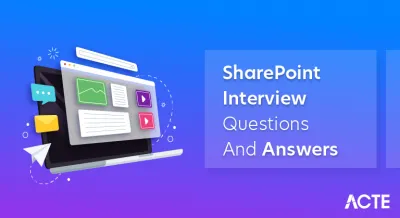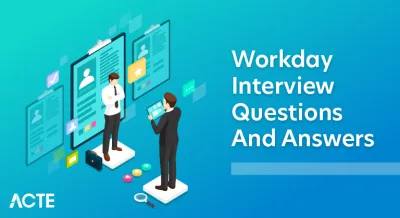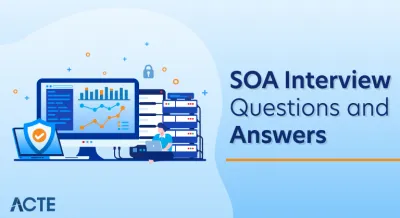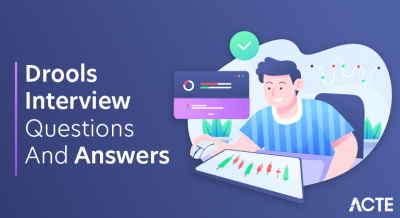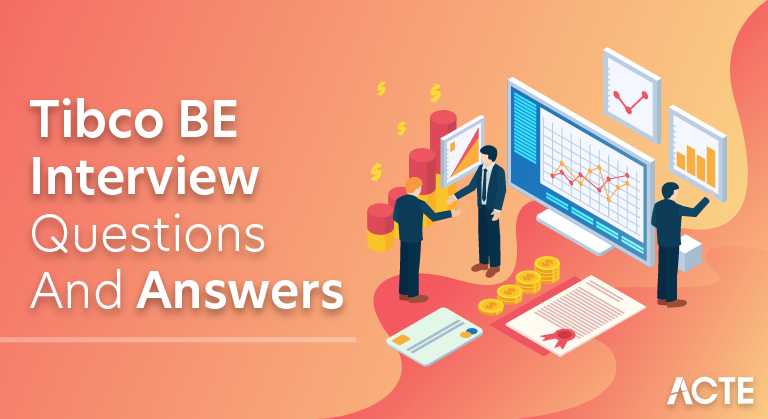
These TIBCO BE Interview Questions have been designed specially to get you acquainted with the nature of questions you may encounter during your interview for the subject of TIBCO BE . As per my experience good interviewers hardly plan to ask any particular question during your interview, normally questions start with some basic concept of the subject and later they continue based on further discussion and what you answer.we are going to cover top 100 TIBCO BE Interview questions along with their detailed answers. We will be covering TIBCO BE scenario based interview questions, TIBCO BE interview questions for freshers as well as TIBCO BE interview questions and answers for experienced.
1. What is TIBCO BusinessEvents (TIBCO-BE)?
Ans:
- Event-driven platform for real-time capturing, correlating, and responding to business events.
- It enables organizations to detect, analyze, and act upon relevant events and patterns within their business processes.
- TIBCO-BE is a part of the TIBCO ActiveMatrix suite and is widely used for complex event processing (CEP) and business rules management.
2. Explain the concept of an “event” in TIBCO-BE.
Ans:
- An event is a significant occurrence or change in state that is of interest to the system. It can trigger business processes or rules.
- TIBCO-BE allows businesses to process and analyze events as they occur in real time. Events can be sourced from various systems, applications, or external sources.
- Event patterns define conditions or sequences of events that interest the system. TIBCO-BE uses these patterns to detect meaningful business scenarios and trigger rule execution.
3. What is the role of a Rule Engine in TIBCO-BE?
Ans:
- The Rule Engine in TIBCO-BE evaluates and executes rules based on incoming events, allowing real-time dynamic decision-making.
- TIBCO-BE includes a powerful rules engine that facilitates the creation, management, and execution of business rules.
- These rules govern how the system should respond to specific events or patterns.
- It processes events and matches them against the specified rules to determine the appropriate actions.
- The Rule Engine is designed for scalability to handle large volumes of events and rules efficiently.
4. How does TIBCO-BE handle event correlation?
Ans:
- TIBCO-BE uses event patterns to correlate events based on conditions or sequences, enabling the detection of complex business scenarios.
- The platform provides capabilities for correlating events based on predefined conditions or sequences.
- This allows organizations to identify complex business scenarios and trigger appropriate actions.
- TIBCO-BE can handle correlation across multiple events concurrently, enabling parallel processing of events and optimizing performance in scenarios with a high volume of incoming data.
5. What is the significance of a Stateful Agent in TIBCO-BE?
Ans:
- A Stateful Agent retains information about the current state of a business process or entity, allowing it to make context-aware decisions.
- Stateful Agents maintain context information related to ongoing business processes. This context includes entities’ current state, attributes, and relevant historical information. This context-awareness enables the system to make decisions based on the complete picture of the business scenario.
- A Stateful Agent is essential for business processes that span over time and involve multiple events. It ensures that the system retains knowledge about the process across different stages, allowing for the proper handling of events at various times.
6. Explain the difference between a Concept and an Instance in TIBCO-BE.
Ans:
| Feature | Concept | Instance | |
| Definition |
Abstract blueprint or data structure |
Concrete representation with values. | |
| Purpose | Defines the structure of data | Represents specific data with values. | |
| Characteristics | Template for creating instances | Actual occurrence of the data structure |
7. How is exception handling managed in TIBCO-BE?
Ans:
- Exception handling in TIBCO-BE involves defining exception rules and handling mechanisms to manage unexpected or exceptional situations during rule execution. Stateful Agents are particularly beneficial when dealing with business entities that have a persistent state.
- For example, in financial applications, a Stateful Agent could manage the state of a customer’s account, including balances and transaction history.
8. Explain the concept of “listening” in the context of TIBCO-BE.
Ans:
- Listening refers to the ability of TIBCO-BE to actively monitor and respond to events from external sources, ensuring real-time event processing.
- TIBCO-BE actively listens to events from various sources.
- Listeners are responsible for monitoring and capturing events, ensuring that the system can respond promptly to changes in the business environment.
9. How does TIBCO-BE support multinational business operations?
Ans:
TIBCO-BE is instrumental in multinational settings, streamlining system integration and enhancing collaboration across global teams for efficient operations, having leveraged its capabilities to integrate diverse systems seamlessly. This has enhanced operational efficiency and fostered collaboration across global teams
10. Example of TIBCO-BE’s impact on multinational data integration.
Ans:
TIBCO-BE played a pivotal role in a project where we needed to integrate data from various sources across different countries. Its robust integration capabilities ensured real-time data exchange, empowering the group to decide with knowledge and streamline processes across borders.
11. How do you handle challenges related to TIBCO-BE implementation in culturally diverse teams?
Ans:
TIBCO-BE implementation in multicultural teams by promoting clear communication and providing comprehensive training. This ensures that team members can effectively utilize TIBCO-BE to achieve common project goals regardless of their cultural background.
12. Optimizing TIBCO-BE for varying time zones in multinational projects: how do you approach it?
Ans:
Leveraging the scheduling and automation features of TIBCO-BE, I ensure the optimal execution of critical processes and data integration tasks across different time zones. This ensures that critical processes and data integration tasks are executed at optimal times, maintaining efficiency across diverse geographical locations.
13. How do you ensure effective collaboration across time zones?
Ans:
Efficient time management and collaborative tools are crucial in overcoming time zone challenges. Scheduling regular virtual meetings accommodating different time zones, setting clear expectations for response times, and utilizing project management tools have been instrumental in maintaining seamless collaboration in multinational projects.
14. What strategies do you employ to troubleshoot and resolve issues in TIBCO-BE implementations?
Ans:
Effective issue resolution in TIBCO-BE involves a systematic approach, including thorough monitoring, diagnostics, and collaboration with support resources, ensuring minimal downtime and optimal performance in enterprise solutions. Top of Form.
15. How do you approach documentation when working on TIBCO-BE projects? ?
Ans:
When working on TIBCO BusinessEvents (TIBCO-BE) projects, a meticulous approach to documentation is essential for ensuring transparency, knowledge sharing, and future maintainability. I create comprehensive documentation outlining the project’s objectives, scope, and high-level architecture. As I delve into the rule design and implementation, I document each rule’s purpose, conditions, and actions clearly and structured.
16. Explain the significance of “Snapshot” in TIBCO BE.
Ans:
- Recovery and Resilience
- Debugging and Analysis
- Simulation and Testing
- Performance Optimization
17. TIBCO BusinessEvents Adapters, and why are they used?
Ans:
Adapters facilitate integration with external systems by providing connectors and interfaces to various data sources.
- Temporal Analysis
- Auditing and Compliance
- Rollback Capability
- Integration with Monitoring Tools
18. Explain the purpose of the “cep: correlator” concept.
Ans:
In TIBCO BusinessEvents (TIBCO BE), the “cep: correlator” concept is crucial in managing and associating related events within the event processing framework.
The primary purpose of the “cep: correlator” is to define and establish relationships between events based on :
- specific criteria
- Event Relationship Establishment
- Sequencing and Order:
- Grouping of Related Events:
- Tracking Event Patterns
19. Explain The significance of the “cep: store” concept in TIBCO BE.
Ans:
In TIBCO BusinessEvents (TIBCO BE), the “cep: store” holds significant importance in event processing and decision-making. The purpose of the “cep: store” is to provide a mechanism for persisting and managing event data
- Historical Data Retention
- Stateful Event Processing
- Event Replay and Simulation
- Fault Tolerance and Recovery
- Temporal Analysis
- Support for Business Intelligence
20. Explain the concept of “Cep: cache” in Tibco-be.
Ans:
- TIBCO BusinessEvents (TIBCO BE) is an event processing platform that allows organizations to detect and respond to business events in real time.
- However, the concept of “Cep cache” is not a standard or well-known phrase in the context of TIBCO BE.
- There may be changes in TIBCO BE since my last update, or there may be specific terminology used in your organization or a newer version of TIBCO BE that I’m unaware of.
- If “Cep cache” is a term specific to your organization or a recent development in TIBCO BE, I recommend checking the official TIBCO documentation and release notes.
- I am contacting TIBCO support for the most accurate and up-to-date information on this concept.
- In general, caching in the context of complex event processing (CEP) systems like TIBCO BE might refer to the storage and retrieval of frequently accessed data to improve performance.
21. Explain the concept of the cep function in Tibco-be.
Ans:
Certainly! While there isn’t a specific “cep function” terminology commonly associated with TIBCO BusinessEvents (TIBCO BE), I can provide some bullet points on key concepts related to complex event processing (CEP) in TIBCO BE :
- Event Processing
- Rules and Patterns
- Event Types
- Event Channels
- Event Processing Agents
- Temporal Logic
22. Explain the concept of the “cep: function” operator in Tibco be.
Ans:
- Operator Types
- Comparison Operators
- Logical Operators
- Arithmetic Operators
- String Operators
- Temporal Operators
- Unary Operators
23. Explain the role of TIBCO BusinessEvents (TIBCO BE) in event-driven architecture.
Ans:
TIBCO BE is a complex event processing (CEP) platform that handles real-time, event-driven applications. It plays a pivotal role in event-driven architecture by processing and correlating events from various sources in real time, enabling companies to respond promptly to critical business events. With its rule-based approach, TIBCO BE allows creating event-driven business logic, making it a powerful tool for detecting patterns, analyzing data streams, and triggering appropriate actions.
24. Differentiate between TIBCO BE and TIBCO BusinessWorks.
Ans:
TIBCO BE, and TIBCO BusinessWorks serve distinct purposes within the TIBCO ecosystem. While BusinessWorks is an integration platform for designing, deploying, and managing integration processes, TIBCO BE focuses on complex event processing and real-time decision-making. BusinessWorks is ideal for orchestrating services and systems, while BE excels in handling and analyzing high-frequency, time-sensitive events.
25. What is the significance of a stateless rule in TIBCO BusinessEvents?
Ans:
In TIBCO BE, a stateless rule is a rule that doesn’t only retain information between events. It operates independently of previous events, making it suitable for scenarios where each event is self-contained. This enhances scalability and simplifies the rule design, as stateless rules are not dependent on the context of previous events.
26. How does TIBCO BE handle event persistence and recovery?
Ans:
TIBCO BE provides event persistence and recovery mechanisms to ensure data integrity in case of failures. The platform uses a combination of transactional storage and a concept called ‘Event Track,’ allowing it to recover events and their state after a system outage. This ensures that critical business events are not lost and can be appropriately processed once the system is back online.
27. Explain the concept of event channels in TIBCO Business Events.
Ans:
Event channels in TIBCO BE provide a communication mechanism between different components of a BusinessEvents solution. They enable the seamless flow of events between processes and entities within the system. Event channels support the decoupling of producers and consumers, enhancing flexibility and scalability in event-driven architectures. By defining event channels, developers can efficiently manage the flow of events and ensure proper communication between different parts of the system.
28. What is the role of the “Administrator” in TIBCO Business Events?
Ans:
The Administrator in TIBCO BE manages the deployment and configuration of BusinessEvents solutions. It handles tasks such as starting and stopping engines, managing resources, and configuring event repository connections.
29. Explain the concept of context management in TIBCO BE.
Ans:
Context management in TIBCO BE involves handling contextual information associated with events. It allows developers to define and manage context variables helpful in storing and retrieving information across multiple rules and rule sets during event processing.
30. What is a “snapshot” in TIBCO BusinessEvents?
Ans:
A snapshot in TIBCO BE captures the state of the rule engine at a specific point in time. It allows developers to analyze and debug the rule execution by providing a snapshot of the engine’s memory, including active rules, rule instances, and variable values.
31. How does TIBCO BusinessEvents support fault tolerance?
Ans:
TIBCO BE achieves fault tolerance through features like engine clustering and event persistence. Engine clustering ensures multiple engines work together, providing redundancy and high availability. Event persistence ensures that events are stored durably, allowing for recovery in case of engine failures.
32. Discuss the role of “Listeners” in TIBCO BusinessEvents.
Ans:
Listeners in TIBCO BE are components that receive events from external sources and inject them into the BusinessEvents engine. They bridge external systems and the BusinessEvents solution, allowing seamless integration with various event sources.
33. What is the purpose of the “Action” concept in TIBCO BE?
Ans:
Actions in TIBCO BE represent executable business logic triggered in response to certain rules-defined conditions. Actions allow developers to specify the steps or processes needed when a rule or set of rules is considered valid.
34. How does TIBCO BusinessEvents handle event ordering and sequencing?
Ans:
TIBCO BE provides mechanisms like event timestamps and temporal operators to manage event ordering and sequencing. Timestamps help establish the chronological order of events, while temporal operators allow developers to define rules based on time-related conditions.
35. Explain the concept of “Event Patterns” in TIBCO BusinessEvents.
Ans:
Event Patterns in TIBCO BE allow developers to define complex event processing logic by specifying patterns of events that should be detected. These patterns can include conditions based on the occurrence, sequence, or timing of events, enabling the identification of specific scenarios within the event stream.
36. What is the purpose of the “Event Repository” in TIBCO BusinessEvents?
Ans:
The Event Repository in TIBCO BE stores event-related data for analysis, reporting, and auditing purposes. It provides a centralized storage mechanism for events and their metadata, facilitating historical analysis and monitoring of event-driven processes.
37. How does TIBCO BusinessEvents handle schema evolution for events?
Ans:
TIBCO BE supports schema evolution through features like dynamic typing and versioning. Dynamic typing allows the engine to adapt to changes in event structure without requiring explicit schema updates. Versioning enables multiple versions of event schemas to coexist, ensuring backward compatibility.
38. Discuss the role of “Event Types” in TIBCO Business Events.
Ans:
Event Types in TIBCO BE define the structure and attributes of events. They serve as templates for incoming events, ensuring the data follows a specific structure. Event Types are crucial for establishing a common understanding of the data format within a BusinessEvents solution.
39. How does TIBCO BusinessEvents integrate with external systems and databases?
Ans:
TIBCO BE provides adapters and connectors for seamless integration with various external systems and databases. Adapters enable communication between the BusinessEvents engine and external applications, while connectors facilitate the interaction with databases, allowing real-time data exchange.
40. Explain the concept of “Rule Inferencing” in TIBCO BusinessEvents.
Ans:
Rule Inferencing in TIBCO BE involves automatically deriving new rules based on existing rules and analysing historical event data. It allows the system to infer additional rules that capture patterns and trends in the event stream, enhancing the adaptability and intelligence of the rule set.
41. In what ways can the performance of TIBCO BusinessEvents solutions?
Ans:
Performance optimization in TIBCO BE involves rule design, engine configuration, and resource management. techniques include :
- Rule simplification.
- Engine clustering for load distribution.
- Efficient use of caching to minimize the impact on system resources.
42. Discuss the role of “Correlation” in TIBCO BusinessEvents.
Ans:
Correlation in TIBCO BE involves associating related events based on common attributes. It enables identifying and grouping events that are part of the same business transaction or scenario, facilitating coherent processing and decision-making across correlated events.
43. Explain the concept of “Temporal Queries” in TIBCO BusinessEvents.
Ans:
Temporal Queries in TIBCO BE involve the ability to query and analyze events based on their temporal characteristics, such as time windows, intervals, and durations. This feature enables the formulation of complex queries that consider the temporal aspects of event data.
44. How does TIBCO BusinessEvents handle dynamic rule changes in a production environment?
Ans:
TIBCO BE supports dynamic rule changes through concepts like Rule Functions and Rule Templates. Rule Functions allow the modification of rule logic at runtime, while Rule Templates provide a mechanism for creating rule instances dynamically based on changing business conditions.
45. Discuss the role of “Memory Management” in optimizing TIBCO BusinessEvents performance.
Ans:
Memory Management in TIBCO BE involves efficient allocation and usage of memory resources. Optimizing memory usage is crucial for large-scale deployments, and strategies include tuning the JVM heap settings, managing object lifetimes, and minimizing unnecessary data duplication.
46. How does TIBCO BusinessEvents address the challenges of event deduplication and idempotency?
Ans:
TIBCO BE provides mechanisms for handling event deduplication by allowing developers to define unique event identifiers. By leveraging idempotency keys, the system can identify and discard duplicate events, ensuring that the processing logic is not affected by repeated occurrences of the same event.
47. Explain the concept of “Event Chaining” in TIBCO BusinessEvents.
Ans:
Event Chaining in TIBCO BE involves linking multiple events based on specific conditions. This allows developers to create complex event-processing logic that spans multiple events and enables the detection of intricate patterns and sequences in the event stream.
48. How does TIBCO BusinessEvents support multi-threading for parallel event processing?
Ans:
TIBCO BE utilizes a multi-threaded architecture to enable parallel event processing. The platform allows developers to configure the number of threads for rule execution, optimizing performance by leveraging the capabilities of multi-core processors.
49. Discuss the significance of “Agent Types” in TIBCO BusinessEvents.
Ans:
Agent Types in TIBCO BE define the behaviour of rule agents and their interaction with the rule engine. They influence event consumption, memory usage, and thread behaviour. Choosing the appropriate Agent Type is crucial for optimizing the performance and scalability of a BusinessEvents solution.
50. What is the role of “Concept Hierarchies” in TIBCO BusinessEvents?
Ans:
Concept Hierarchies in TIBCO BE allow developers to model relationships between concepts or entities within the event data. This enables the creation of more expressive rules and facilitates the detection of complex patterns involving hierarchical structures.
51. How does TIBCO BusinessEvents handle processing large volumes of events in real time?
Ans:
TIBCO BE addresses the challenges of handling large event volumes through features like incremental pattern matching and windowing. Incremental pattern matching optimizes the processing of new events, while windowing allows developers to define time-based or count-based windows for efficient event aggregation.
52. Explain the role of “Context Partitioning” in TIBCO BusinessEvents.
Ans:
Context Partitioning in TIBCO BE involves dividing the event processing workload across multiple nodes or engines. This approach enhances scalability by allowing the system to handle more events through parallel processing, each focusing on a specific subset of the data.
53. How does TIBCO BusinessEvents ensure data consistency in a distributed environment?
Ans:
TIBCO BE provides features like transactional processing and distributed caching to ensure data consistency in a distributed deployment. Transactions help maintain atomicity and isolation, while distributed caching ensures that rule engines share a consistent view of the data across the network.
54. Discuss the role of “Pattern Variables” in TIBCO BusinessEvents.
Ans:
Pattern Variables in TIBCO BE allow developers to capture and store intermediate results while evaluating event patterns. They temporarily store data within a rule, enabling more complex and context-aware event-processing logic.
55. How does TIBCO BusinessEvents handle schema evolution for backward compatibility?
Ans:
TIBCO BE supports backward compatibility through features like schema evolution and versioning. Schema evolution allows the system to adapt to changes in event structure without breaking compatibility with existing rules or event sources.
56. Explain the concept of “Temporal Queries” in TIBCO BusinessEvents.
Ans:
In TIBCO BusinessEvents, temporal queries focus on analyzing events based on their temporal attributes and timestamps. These queries utilize expressions like before or after to filter events within specified time periods. The concept of an “event window” sets the temporal scope for analysis, supporting sliding and tumbling windows for continuous or discrete intervals. Temporal queries are crucial for scenarios where event sequencing and timing are vital, aiding in tracking patterns over time or identifying events post-specific triggers. Examples include searching for recent events, analyzing patterns within defined timeframes, or identifying events following specific occurrences. Overall, temporal queries enhance TIBCO BusinessEvents’ ability to extract meaningful insights from time-related aspects of event data.
57. Discuss the role of “Snapshot Isolation” in TIBCO BusinessEvents.
Ans:
Snapshot Isolation in TIBCO BE ensures that each rule agent operates on a consistent snapshot of the event data, even in a distributed environment. This helps prevent inconsistencies when multiple rule agents process events concurrently.
58. How does TIBCO BusinessEvents handle event-driven state management?
Ans:
TIBCO BE provides features like state machines and event states for event-driven state management. State machines allow developers to model complex state transitions, while event states enable the definition of rules based on the current state of an event.
59. Discuss the role of “Decision Tables” in TIBCO BusinessEvents.
Ans:
Decision Tables in TIBCO BE provide a tabular representation of rules, conditions, and actions. They offer a visual and structured way to define complex decision logic, making it easier for business analysts and developers to collaborate on rule design.
60. How does TIBCO BusinessEvents detect anomalies or outliers in event streams?
Ans:
TIBCO BE supports the detection of anomalies through the use of statistical functions and pattern matching. By defining rules that analyze event data for deviations from expected patterns, the platform enables the identification of outliers in real-time event streams.
61. Explain the role of “Event Expiry” in TIBCO BusinessEvents.
Ans:
Event Expiry in TIBCO BE involves setting a lifespan for events, after which they are automatically removed from the event stream. This feature helps manage events’ relevance over time and prevents the accumulation of obsolete data.
62. How does TIBCO BusinessEvents handle events with incomplete data?
Ans:
TIBCO BE provides mechanisms for handling events with missing or incomplete data through features like default values and conditional processing. Developers can define rules that account for the absence of specific attributes and take appropriate actions based on the available information.
63. What is TIBCO BusinessEvents Views, and how does it enhance event monitoring?
Ans:
TIBCO BusinessEvents Views is a component that provides a web-based interface for monitoring and visualizing event data in real time. Users may design unique charts, dashboards, andreports, gaining insights into the behaviour of the event-driven system. Views enhance situational awareness and facilitate quick decision-making.
64. How does TIBCO BE’s Event Schema Governance impact data consistency?
Ans:
Event Schema Governance in TIBCO BE involves establishing policies and processes for managing changes to event schemas across the organization. This ensures consistency in event data structures, preventing issues related to mismatches or inconsistencies that may arise when multiple components or teams contribute to the event-driven architecture.
65. How does TIBCO BE integrate with TIBCO Spotfire for advanced analytics and visualization?
Ans:
TIBCO BusinessEvents seamlessly integrates with TIBCO Spotfire, a data analytics and visualization platform. This integration allows users to combine real-time event data from BusinessEvents with historical and contextual data in Spotfire, enabling advanced analytics, trend analysis, and interactive visualization for better decision support.
66. What is the Continuous Query Language (CQL) concept in TIBCO BusinessEvents?
Ans:
Continuous Query Language (CQL) in TIBCO BE is a language for expressing complex event-processing queries. It allows developers to define queries that continuously analyze the event stream for specific patterns or conditions. CQL is particularly useful for expressing intricate event patterns and correlations concisely and expressively.
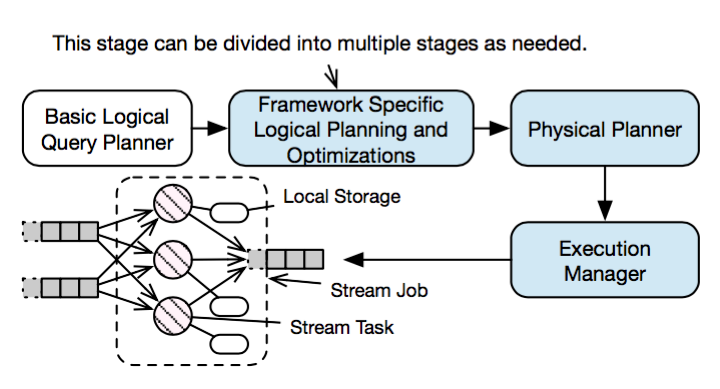
67. What is the role of Semantic Enrichment in TIBCO BusinessEvents?
Ans:
Semantic Enrichment in TIBCO BE involves enhancing event data by adding contextual information from external sources. It enriches the semantic meaning of events, allowing for more informed and context-aware decision-making. This is particularly valuable in scenarios where events need to be understood in the broader context of the business environment.
68. What led to your interest in TIBCO BusinessEvents and your career pursuit?
Ans:
I became interested in TIBCO BusinessEvents due to its pivotal role in enabling real-time decision-making in complex event-driven systems. The platform’s ability to handle high-frequency events and support dynamic business rules aligned with my passion for creating efficient and intelligent solutions.
69. Describe a challenging situation in a TIBCO BE project and how you handled it.
Ans:
We saw a performance in an earlier project—bottleneck during high event loads. I collaborated with the team to analyze and optimize rule design, leverage caching, and adjust engine configurations. This collaborative approach helped us overcome the challenge and improve overall system performance.
70. How do you stay updated on TIBCO BusinessEvents and related tech?
Ans:
I regularly participate in TIBCO forums, attend webinars, and engage in continuous learning through official documentation and community resources. Networking with professionals in the field and staying connected with industry trends also contribute to my ongoing learning.
71. Give an Example of your leadership in a TIBCO BE project.
Ans:
In a recent project, I took the initiative to mentor junior team members in understanding TIBCO BusinessEvents best practices. This included conducting knowledge-sharing sessions, providing guidance on rule design, and fostering a supportive learning environment.
72. How do you collaborate with cross-functional teams of varying technical expertise?
Ans:
Effective collaboration is critical. I ensure open communication, tailor technical discussions to the audience’s expertise level, and promote knowledge-sharing sessions. This strategy creates a cooperative atmosphere where team members can contribute their strengths.
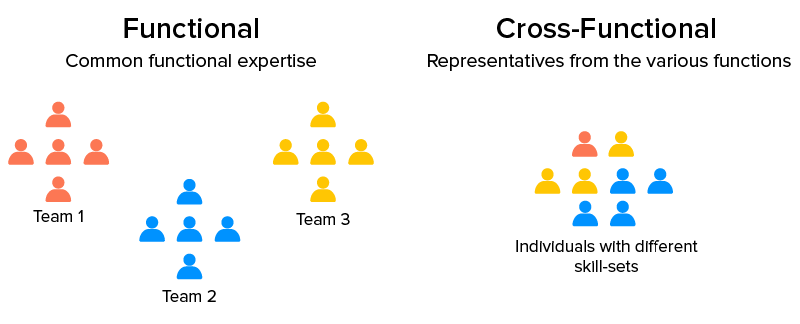
73. How do you prioritize tasks and manage time in a fast-paced TIBCO BE project?
Ans:
I rank my tasks according to important routes and project milestones. I am leveraging project management tools. I regularly reassess priorities to adapt to changing requirements and allocate time for ongoing learning to stay ahead in this dynamic field.
74. How do you convey technical concepts to non-tech stakeholders, like executives?
Ans:
I use clear and concise language, avoid technical jargon, and focus on presenting the business value of TIBCO BusinessEvents solutions. Charts and other visual tools like diagrams are also helpful in conveying complex concepts in a more accessible manner.
75. How do you handle situations where project requirements change mid-way through development?
Ans:
I follow security best practices such as encryption, secure communication protocols, and access controls. Regular security and compliance audits are conducted to identify and address potential vulnerabilities.
Encryption : Use encryption techniques to secure data in transit and at rest.
Access Controls : Implement substantial access restrictions to limit authorized personnel’s access to the system and data.
Authentication and Authorization : Employ robust authentication mechanisms and define granular authorization policies to control user privileges.
76. How is TIBCO BusinessEvents ensuring data security?
Ans:
In a previous project, conflicting opinions arose regarding implementing specific rules. I facilitated a team discussion, encouraged open dialogue, and facilitated compromise. This approach resulted in a collaborative solution that satisfied technical requirements and business objectives.
77. Share a team conflict resolution experience and describe your approach.
Ans:
In a previous project, conflicting opinions arose regarding implementing specific rules. I facilitated a team discussion, encouraged open dialogue, and facilitated compromise. This approach resulted in a collaborative solution that satisfied technical requirements and business objectives.
78. Does TIBCO BusinessEvents align with and deliver measurable business value?
Ans:
I actively engage with business stakeholders to understand their goals and expectations. I align technical decisions with these objectives and establish key performance indicators (KPIs) to measure the success and impact of the implemented TIBCO BusinessEvents solutions.
79. How is Your team’s onboarding approach for TIBCO BusinessEvents projects?
Ans:
I provide comprehensive onboarding sessions, offer mentorship opportunities, and create documentation to familiarize new team members with the TIBCO BusinessEvents environment. Regular check-ins and open communication channels are maintained to address any questions or concerns.
80. Explain how to Manage competing priorities in a TIBCO BusinessEvents project.
Ans:
I implemented a transparent communication strategy in a complex project with multiple stakeholders. Regular status updates, stakeholder meetings, and prioritization discussions were crucial in managing expectations and ensuring alignment with project goals.
81. What is the approach to TIBCO BusinessEvents performance tuning? Example.
Ans:
I leverage profiling tools, conduct thorough performance analysis, and implement best practices such as rule simplification and caching. In a specific project, optimizing rule execution produced a notable decrease in processing time and enhanced performance in general system performance.
83. What are Your continuous learning initiatives for advancing in TIBCO BusinessEvents?
Ans:
I participate in online courses, attend conferences, and pursue relevant certifications. Additionally, I engage in hands-on experimentation with new features and updates, staying proactive in adapting to emerging trends and advancements.
84. How do you document TIBCO BusinessEvents for knowledge transfer and maintainability?
Ans:
I prioritize comprehensive documentation, including design decisions, code annotations, and best practices. This not only aids in knowledge transfer but also facilitates the maintainability of TIBCO BusinessEvents solutions over the long term.
85. What is the approach to training sessions for unfamiliar team members for TIBCO BusinessEvents?.
Ans:
I design interactive training sessions that include practical exercises and real-world examples. This hands-on approach helps team members grasp key concepts and gain confidence in applying TIBCO BusinessEvents techniques to their work. Conduct interactive workshops on practical applications and hands-on exercises to familiarize team members with TIBCO BusinessEvents. Emphasize critical concepts and provide real-world examples to enhance understanding.
86. Handling stakeholder expectations versus technical constraints in TIBCO BusinessEvents?
Ans:
I initiate transparent and constructive conversations to bridge the gap between business expectations and technical constraints. Together with stakeholders, I explore alternative solutions or compromises that align with both business goals and technical realities. Through effective communication and collaboration, navigate stakeholder expectations versus technical limits in TIBCO BusinessEvents.
87. Explain Anticipated future trends and advancements in TIBCO Business Events.
Ans:
I foresee advancements in machine learning integration for predictive analytics within TIBCO BusinessEvents. Additionally, the continued evolution of event-driven architectures and the integration of TIBCO BusinessEvents with emerging technologies will be crucial in determining the future of the field.
Enhanced AI Integration : Integration of advanced AI and machine learning capabilities to enable more intelligent event processing.
Cloud-Native Solutions : Increasing adoption of cloud-native architectures for TIBCO BusinessEvents to enhance scalability and flexibility.
IoT Integration : Improved support for Internet of Things (IoT) scenarios, enabling better handling of events from connected devices.
Streamlined DevOps Processes : Integration of DevOps practices to streamline development, testing, and deployment processes.
88. How do you handle stress and tight deadlines in a TIBCO BusinessEvents project?
Ans:
- Prioritize tasks based on urgency and impact.
- Divide difficult jobs into smaller, more doable steps.
- Maintain open communication with the team about workload and deadlines.
- Utilize stress-management techniques such as time management and delegation.
89. Can you share an example of a time when you had a sudden change in project requirements?
Ans:
- Quickly assessed the impact of changes on the project timeline.
- Engaged with stakeholders to understand the rationale behind the changes.
- Collaborated with the team to adjust plans and reallocate resources accordingly.
- Ensured transparent communication about the revised project scope.
90. Promoting continuous learning in your team, specifically with TIBCO BusinessEvents??
Ans:
- Urge your teammates to set aside time for education—and skill development.
- Facilitate knowledge-sharing sessions and brown bag lunches.
- Support participation in relevant conferences, webinars, and training programs.
- Establish a culture where mistakes are viewed as learning opportunities.
91. Describe your performance feedback and provide constructive criticism to team members.
Ans:
- Conduct regular one-on-one meetings to discuss individual performance.
- Focus on specific, observable behaviors rather than personal traits.
- Provide helpful criticism in a kind and encouraging way.
- Establish clear performance expectations and recognize achievements.
92. How do you promote diversity and inclusion within your team?
Ans:
- Advocate for diverse hiring practices.
- Create an inclusive team culture through open communication and collaboration.
- Address bias and promote awareness through diversity training.
- Celebrate cultural diversity and different perspectives within the team.
93. How do you ensure a harmonious work-life balance for you and your group members?
Ans:
- Set clear expectations around work hours and response times.
- Encourage the use of vacation days and breaks to recharge.
- Promote flexible work arrangements when feasible.
- Monitor workloads to prevent burnout and provide support when needed.
94. How do you handle situations when there are conflicting opinions within the team?
Ans:
- Facilitate open discussions to understand different perspectives.
- Encourage team members to present their viewpoints and rationale.
- Seek consensus when possible, considering the impact on the project.
- Make decisions based on a balance of technical feasibility and business objectives.


